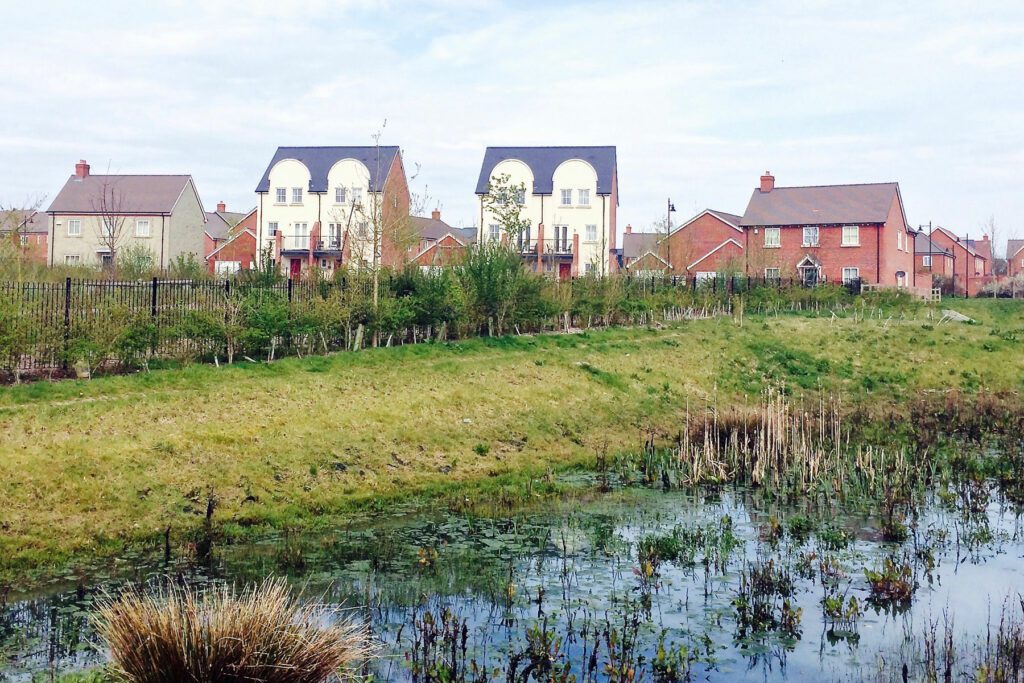Authors
On 17 and 18 February 2025, the Supreme Court heard the appeal in the case of C G Fry & Son Limited v Secretary of State for Levelling Up, Housing and Communities & Somerset Council, a landmark case on the issue of nutrient neutrality. Having observed the hearing from the public gallery whilst seconded to Natural England, I have provided a summary of how the proceedings unfolded while we await the Court’s final judgment.
Background to the case
The case concerns whether the Conservation of Habitats and Species Regulations 2017 (the Habitats Regulations) required an “appropriate assessment” before a local planning authority decided whether to discharge conditions on the approval of reserved matters, having previously granted outline planning permission without this, for a major development of housing on land close to a protected site.
For more information about the history of this case, please see our previous articles covering the High Court case and the Court of Appeal case.
Appeal to the Supreme Court
In November 2024, C G Fry & Son Ltd was granted permission to appeal to the Supreme Court. The hearing took place over 1.5 days on 17 and 18 February 2025 before Lord Reed, Lord Sales, Lady Simler, Lord Hamblen and Lord Stephens. C G Fry & Son Ltd (the Appellant) was represented by Lord Banner KC. The Appellant’s appeal was in relation to two Grounds:
- Ground 1: that the Court of Appeal had erred in their construction of the Habitats Regulations. The Appellant submitted that the Respondents’ interpretation of the Habitats Regulations strayed from a purposive interpretation into “re-writing” the law, which was the responsibility of the government and the legislature rather than the Court. The Appellant also submitted that, in any event, the Appellant’s interpretation was not in conflict with the purpose of the legislation, and existing case law did not preclude the Appellant’s approach.
- Ground 2: the Appellant’s alternative argument was that the habitats legislation did not apply in law to the site (a Ramsar site), so the matters in question were legally irrelevant to the discharge of conditions, and government policy and the National Planning Policy Framework (NPPF) could not make these issues legally relevant.
The Secretary of State (the First Respondent) was represented by Sir James Eadie KC and Richard Moules KC. The First Respondent’s submissions in relation to Ground 1 included the submission that the Habitats Regulations were designed to transpose the EU Habitats Directive (92/43/EEC), whose purpose was to set out appropriate steps to avoid the destruction of habitats and enshrine the “precautionary principle” of environmental law. Sir James Eadie KC submitted that, if the Habitats Regulations were interpreted as narrowly as they were by the Appellant, this would be contrary to the purpose of the Directive and would be untenable.
Somerset Council (the Second Respondent) was represented by Luke Wilcox, who made short submissions in furtherance of the First Respondent’s more substantial submissions.
While these were not referred to in the hearing, the Supreme Court also granted permission for written interventions from the Wildlife and Countryside Link,[1] a coalition of environment and wildlife organisations in England, and also from the Office for Environmental Protection (OEP), who have published their written submissions in respect of Ground 1 on their website.[2]
Significance of the case
Lord Reed acknowledged at the conclusion of the hearing that there were plenty of issues for the justices to consider ahead of providing their judgment. The Supreme Court’s decision to allow written submissions from the OEP and the Wildlife and Countryside Link demonstrates the significance of this case and suggests that the Court recognises the wider implications for society and the environment beyond the facts of this case.
While this case relates directly to nutrient neutrality, the OEP’s written submissions warn that the arguments raised by the Appellant “have implications going far beyond nutrient neutrality” and would result in a “serious weakening” of the environmental protections afforded by the Habitats Regulations for protected sites. If local planning authorities could not require an appropriate assessment before discharging conditions on the approval of reserved matters, the OEP warns that competent authorities “would be compelled to agree to a project that has not been assessed and might well fail an assessment were one to be undertaken”, which would produce a result “at odds with ensuring environmental protection and the purpose of the Habitats Regulations”. Lord Banner KC’s submissions at the hearing indicated that, if this outcome was in line with the correct reading of the legislation, this would be “tough” and Parliament would need to update the legislation if they sought a different outcome.
Despite this case also having wider implications, the issue at the heart of it is the apparent conflict between nutrient neutrality obligations and the delivery of housing and infrastructure. The judgment will be given against the backdrop of the government’s efforts to resolve this conflict and achieve their commitment of building 1.5 million homes and advancing 150 major infrastructure project decisions by the end of this Parliament.[3] As part of the Planning and Infrastructure Bill, the government issued a policy paper on 15 December 2024 inviting views on their proposed new approach to development and nature recovery – this acknowledged that the current approach in relation to nutrient neutrality can be burdensome, and included proposals for Delivery Plans covering specific areas rather than multiple project-specific assessments.[4] The government’s view is that its reform can deliver a “win-win” for development and the environment. It will therefore be interesting to see whether C G Fry’s appeal, regardless of the outcome, contributes to further legislative reform in the context of nutrient neutrality.
We intend to provide an update on this judgment when it is handed down. In the meantime, further information about the case and recordings of the hearing sessions can be found on the Supreme Court website.
[1] Supreme Court grants permission for charity to intervene
[2] OEP publishes written submissions in Habitats Regulations Supreme Court case | Office for Environmental Protection
[4] Planning Reform Working Paper: Development and Nature Recovery – GOV.UK


